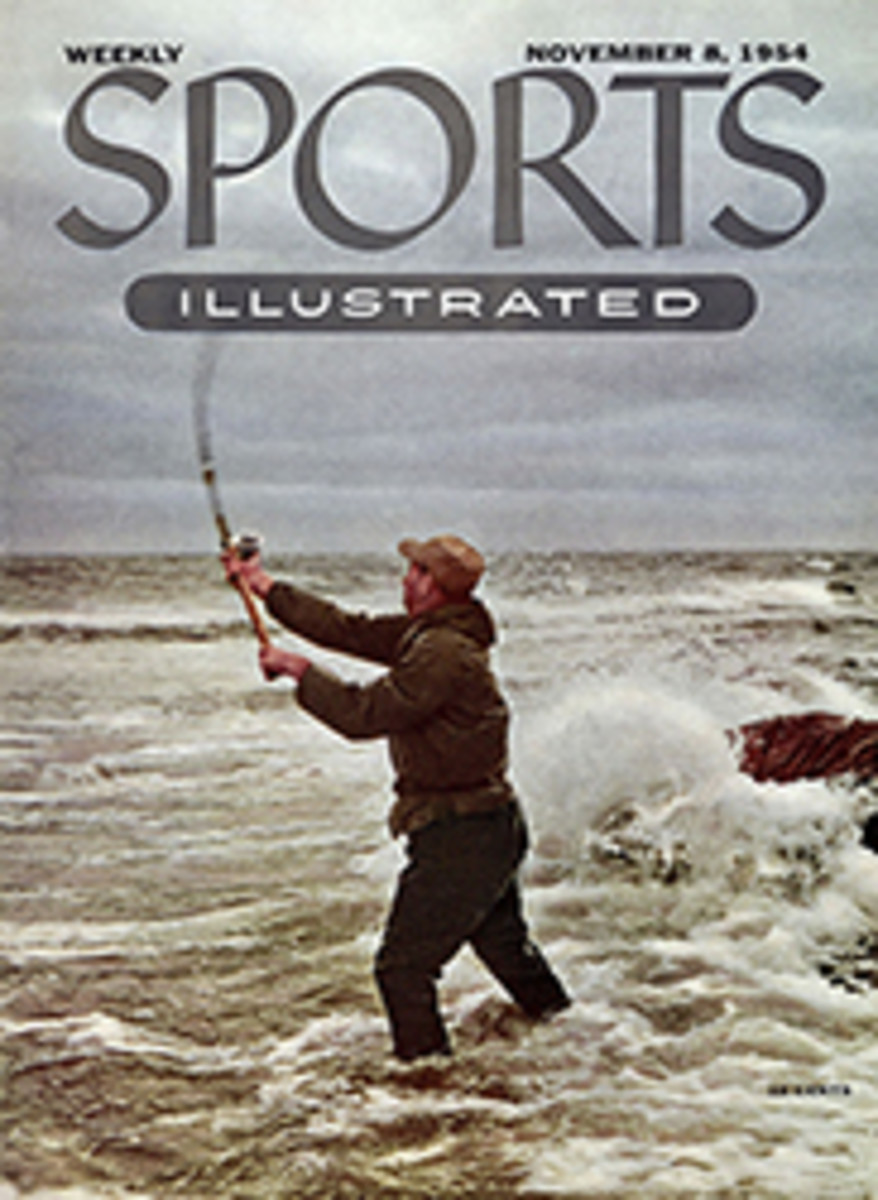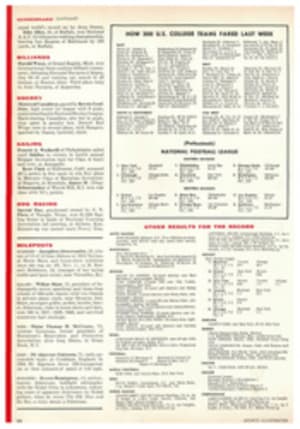
INDIANS' MEDICINE MAN
If ever a football team needed the mothering balm of a trainer's sympathetic hand and heart, Stanford University's wounded Indians are it. Winner of their first three games and feeling rather perky, they were summarily scalped by Navy 25-0, then slaughtered by U.C.L.A. 72-0.
But probably no one on the Palo Alto campus took these crushing defeats so hard—or in quite the way—as did the Stanford trainer himself. For 37-year-old Donald Conrad Jarvis is no ordinary athletic trainer who merely straps and patches a player for the next battle. Connie Jarvis is a dedicated ministrant whose interest in a Stanford victory is only surpassed by his paternal concern for "his boys."
Like most trainers, Jarvis concedes that he's a frustrated athlete-doctor. He became head trainer in 1946 and has tended the needs and bruises of all Stanford's athletic teams ever since. "I'll die at Stanford if I can," insists Jarvis. And live and die he does, every time the Indians are in action.
A TYPICAL SATURDAY
On a typical Saturday, Jarvis' ups and downs begin early in the morning at a Palo Alto hotel where the football squad has quietly spent Friday night away from the pregame campus high jinks. At 8:30, after rousing his flock, Jarvis begins taping injured knees, ankles and wrists before the players get dressed. He also must wrap the ankles of a big man like 215-pound guard Tony Mosich, whose ankle joints are too weak to carry him through an entire game without breaking down.
At 10 a.m. the team eats its only pregame meal: roast beef, baked potato, vegetables, all the toast and honey they want, raisin custard and warm tea. "The idea," Jarvis explains, "is to fill their bellies with plenty of nonfatty food so they can have it fully digested before the game."
Some players, too nervous to digest food, are given a sedative. But this doesn't always work, says Jarvis. He recalls when he gave one player Drama-mine until he learned that by the third quarter the boy was falling asleep.
After brunch, Jarvis dons his white doctor's smock and professional air. Then, in his elaborate $20,000 training room, equipped with everything from whirlpool baths and diathermy units to electric vibrators and massage tables, he deftly plies his art.
A halfback needs a pneumatic pad to protect a thigh Charley horse, plus a careful fitting of his hip pads to cover a badly bruised nerve spot above the joint—one of football's most painful occupational hazards. On the broken hand of a tackle, Jarvis tapes a hard piece of plastic, then wraps the hand with a heavy layer of soft gauze. "Sure this could make quite a weapon," he admits, "but I can trust this boy—and naturally we tell the other team about it."
The next patient is a lineman with a well-battered nose. Jarvis inserts two straws deep in the nostrils and administers drop of Privine to shrink the membranes and open the passages.
In between such special cases, Jarvis and an assistant constantly treat an assortment of minor aches and sores. On an average day, they use 100 yards of adhesive, one foot wide.
NO LULL FOR THE TRAINER
After the bandaging, the players sprawl out on mats in the locker room and listen to Eastern games on the radio until time to dress. But there's no lull for Trainer Jarvis: now is the time when the soccer and junior varsity football teams which played in the morning begin streaming in.
As part trainer, part coach and all Stanford fan, Jarvis' gestures and grimaces reflect the fortunes of his team once the game is underway. He runs the sidelines, watching players for undue fatigue or concealed injuries. During time out, he sprints onto the field for a closer look or to help an injured player off. Periodically, he consults with Coach Chuck Taylor when he sees a player in trouble.
At half time, Jarvis checks the players for injuries and supervises the dispensing of tea, oranges and dextrose wafers, the only refreshment permitted during the game. He makes particularly sure that no one puts ice in the tea. "A couple of years ago," he recalls, "one thirsty boy downed three cups of tea with ice and in the second half was sick all over the field. Actually, it's more cooling to have something warm in your stomach."
With the final gun, Jarvis' work day is nearly done. Back in the training room, he cuts off tape, swabs cuts, gives eye drops to a myopic quarterback whose contact lenses had irritated his eyes, and, depending on the score, offers sympathy or congratulations. The injuries from the game are referred to the team physician—a sprained ankle, a hip injury and a broken hand bone.
After 10 active hours on his feet, Jarvis can finally relax—and begin worrying about next week's game.
PHOTO
NAT FARBMAN
TAPING RIBS. Trainer Jarvis braces an injured end who has just been taken out of the game. Jarvis uses some 50 miles of adhesive tape each season.
PHOTO
NAT FARBMAN
PAINFUL TOE of player injured in the morning soccer game demands Jarvis' gentlest touch. As head athletic trainer, he tends all of the Stanford teams.
PHOTO
NAT FARBMAN
BRUISED ARM is bandaged in Stanford's $20,000 training room before game.
PHOTO
NAT FARBMAN
STIFF SHOULDER is clamped in a diathermy unit. Heat relieves the pain.

